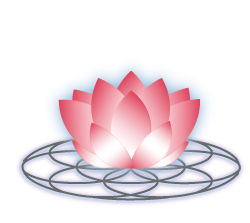Digestive issues such as bloating, acid reflux, constipation, and irritable bowel syndrome (IBS) are common complaints that can significantly impact quality of life. While dietary and lifestyle changes often play a key role in managing these conditions, manual osteopathic therapy (MOT) offers a holistic, hands-on approach to improving digestive health by addressing the root causes of dysfunction within the body.
Enhancing Nerve Communication
The digestive system relies heavily on signals from the autonomic nervous system, which controls processes like gut motility, enzyme secretion, and nutrient absorption. These nerve signals originate from the spinal cord and pass through the thoracic and lumbar regions of the spine. Misalignments or restrictions in these areas can interfere with proper communication between the brain and the digestive organs. Osteopathic practitioners use gentle spinal mobilization and other techniques to restore alignment and enhance nerve flow, improving overall digestive function.
Improving Circulation
Efficient blood flow is essential for delivering oxygen and nutrients to the digestive organs while also removing waste products. When circulation is impaired, the digestive system may struggle to perform optimally. Techniques such as soft tissue manipulation and visceral mobilization help improve blood flow to the stomach, intestines, liver, and other key organs, supporting their natural functions and promoting healing.
Releasing Diaphragm Tension
The diaphragm, a dome-shaped muscle beneath the lungs, plays a significant role in digestion by facilitating pressure changes that aid in the movement of food through the gastrointestinal tract. Restrictions or tension in the diaphragm can disrupt this process, leading to issues such as acid reflux, bloating, and discomfort. Osteopathic therapy can release tension in the diaphragm and surrounding structures, improving its function and enhancing digestive efficiency.
Visceral Manipulation: Supporting Organ Mobility
Visceral manipulation is a specialized osteopathic technique that focuses on the gentle manipulation of internal organs. This approach helps release adhesions, improve mobility, and restore the natural rhythm of the digestive organs. It is particularly beneficial for individuals dealing with post-surgical adhesions, chronic constipation, or IBS, as it encourages proper organ function and reduces discomfort.
Stress Reduction and Its Impact on Digestion
Chronic stress can wreak havoc on the digestive system by activating the sympathetic nervous system, also known as the "fight or flight" response. This shifts the body's focus away from digestion, slowing down processes like peristalsis and enzyme production. MOT incorporates techniques that address physical tension and promote relaxation, activating the parasympathetic nervous system, or the "rest and digest" response. This shift not only improves digestion but also enhances overall well-being.
Correcting Postural Imbalances
Postural issues can compress the abdominal cavity, reducing space for the digestive organs to function properly. Poor posture, particularly when sitting for extended periods, can exacerbate conditions like acid reflux or constipation. By addressing postural imbalances, osteopathic therapy creates an optimal environment for the digestive system to work efficiently.
Common Digestive Issues Helped by MOT
Manual osteopathic therapy can benefit individuals dealing with a wide range of digestive issues, including:
Acid reflux or GERD
Bloating and gas
Constipation or diarrhea
Irritable bowel syndrome (IBS)
Post-surgical adhesions
A Holistic Approach to Digestive Health
Manual osteopathic therapy takes a whole-body approach to healing, recognizing the interconnectedness of the body’s systems. By addressing structural and functional imbalances, improving circulation, and supporting the nervous system, MOT offers a natural and effective way to enhance digestion. If you’re struggling with digestive issues, consider consulting an osteopathic manual practitioner to explore how this gentle, hands-on therapy can help restore balance and improve your quality of life.
Take the Next Step Toward Better Digestive Health
Are you ready to experience the benefits of manual osteopathic therapy for your digestion? Schedule a consultation with a qualified osteopathic manual practitioner today and take the first step toward improved well-being and a healthier digestive system.
~Derek Chiu, MOT, RMT

